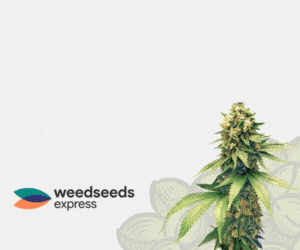![[Image: extraction-process-of-cannabis.png]](https://cannabidiolforums.com/images/extraction-process-of-cannabis.png)
Traditional botanical extractions are having the objective of providing the extracts in a readily usable form. There have been using of numerous methods for the creation of marijuana concentrates. You must have an understanding of desired results and causes behind using the extracts. For instance, recreational, therapeutic, or medical.
There is a requirement of choosing the extraction process within a marijuana processing plant. For instance, ethanol, hydrocarbon, supercritical fluid, or solvent-less. An understanding of the physicochemical attributes, for instance, color, clarity, aroma, viscosity, or cannabinoid potency. It is along with a pharmaceutical-grade formulation or a high-end consumable, these are the factors that drive the quality of the product. Regardless of whether the product is a kind of crude extract, it will assist in making decisions about how to design a marijuana extraction process.
There are three key stages when designing a marijuana extraction process. These are mainly extraction, preprocessing, and purification. These will affect the properties of the resulting extracts of marijuana. It becomes much more straightforward to make decisions about those stages. It is when you have a better understanding of the requirements of the end product.
The Basics Of Marijuana Extracts or Concentrates
The major objective of marijuana extraction is to do the separation and collection of the desirable plant compounds. For instance, terpenes and cannabinoids from the plant matrix. You can do the utilization of different extraction for dividing plant material into extracts. For instance, cannabinoids and terpenes. These deliver scents, appealing flavors, and effects.
There could be an impact of drying and storage of marijuana raw material on the quality of the finished extracts. If the objective is to serve the traditional cured flavor of marijuana. Then identification of the optimal temperature, moisture, and humidity content will drive the development of that process step.
The key is the identification of how to undertake and measure the process step. For instance, terpene and moisture content. Another crucial processing step is the reduction in the size of the raw material. This step can bring improvement in the efficiency and quality of a marijuana extraction process. The main objective of this process step is to reduce the particle size of the material the extraction of which has to happen. It results in an enhanced surface area which is available for the extraction of solvent.
The major objective of the extraction process is to facilitate the bioactive components of the marijuana raw material. It is as close to its natural state as it is possible in the finished extract while doing the optimization of the efficiency of the extraction process.
There are numerous size-reduction of variables the requirement of which might occur for comparison. For instance, low-speed grinding versus high-speed grinding, room temperature versus chilled, milling versus grinding. If you have an understanding of the extraction of target compounds before and after the size reduction process. Then it will assist in the minimization of the degradation which results from oxidative or thermal damage.
Normally, solvent-based extractions for instance CO2, hydrocarbon, and ethanol do creation of concentrates which refers to as oil. Some of these extraction methods are quite difficult, expensive, and risky. Everyone should have the analytical skills and equipment for performing the extraction processes effectively and safely. There is a requirement for the analysis of extractions. It should be from a professional testing laboratory for ensuring the final product is safe for humans to do the consumption.
Extraction Methods of Cannabis
The extraction process is the heart of any marijuana processing plant. It will have an impact on every physiochemical attribute of the marijuana extract which is in process. It will represent a crucial portion of the capital outlay which has an association with the processing plant. Extraction methods are inclusive of light hydrocarbon extraction, supercritical CO2 extraction, and ethanol extraction.
There has been a common use of light hydrocarbon, for instance, propane and butane. The reason is its minimal equipment method and low running cost. This solvent system serves with the fast extraction. It can also be selective for terpenes and cannabinoids with limited co-extraction of other potentially unwanted compounds. For instance, plant waxes and chlorophyll. It is from the marijuana raw material. Light hydrocarbon extraction systems might be like in the middle of the road in terms of capital cost. But, it may demand a serious infrastructure
investment for the creation of safe working space. It is dependent on the local safety requirements. These extractions might be risky. The reason is that hydrocarbons burn in a very easy manner in the gas phase.
There are a limited number of variables that one can adjust while doing the production of a light hydrocarbon extract. The easy operation of hydrocarbon extraction systems refers that the learning curve is relatively simple for operators. The reason is propane and butane which are highly volatile compounds. There may be a requirement for the removal of the solvent from the extract which refers to purging. This purge step is inclusive of heating the extract under deep vacuum conditions.
The extraction of ethanol has become enhancing popular. The reason is its low cost, clear designation, food-grade solvent, and speed of extraction. While ethanol is a less selective solvent than propane and butane, it will strip a huge range of compounds from the marijuana raw material. Most often extraction of ethanol has the requirement of coupling with the post-extraction purification process. It is for the removal of unwanted co-extractives.
Solvent removal does the representation of a significant time-consuming step as with light hydrocarbon extraction. Ethanol evaporation has the requirement of more energy in comparison to hydrocarbons. After that, during solvent removal, the huge majority of volatile aroma compounds will become lost from the extract.
If those compounds are not crucial to the end product, then this potential complexion is a non-issue. But, this may not be an ideal process if your formulations refer to leverage the entourage effect of terpenes & cannabinoids which are acting synergistically. The extraction of ethanol is risky and time-consuming. The reason is that ethanol has high-flammable. This method in turn also does the presentation of the challenge of co-extraction of chlorophyll, which is bitter. The concentrates are relatively safe for making and consuming after the ethanol becomes evaporated.
The extraction of supercritical CO2 (carbon dioxide) has risen to a place of distinction in the marijuana industry. Extraction of supercritical CO2 extraction is dependent on turning gaseous carbon dioxide into a supercritical liquid. It happens by the application of pressure and temperature until attaining a supercritical form of liquid.
The meaning of its steep learning curve & high capital spend is that it is not the ideal choice for some people. But, the depth of turnability that its solvent system affords serves the processor with a level of control. This control is on the produced extract that no other process can serve. This turnability is because of an exceptional property of CO2 in the supercritical phase. The operator can make changes in the solvent characteristics of the CO2 by controlling the temperature & pressure of the extraction. He can also design a process for the extraction of only compounds that meet the objectives of their end product.
CO2 extracts don't require further removal of solvent. The reason is that it evaporates from the extract when collected from the extractor. It signifies that the operator can do the capturing of the natural identical aroma profiles from their raw material. Marijuana extraction that comes with CO2 can do the removal of flavorsome marijuana compounds from the matrix of plants with higher yields and clearer cannabinoids. It is safe to do the consumption of CO2 extracts. Even the process of the creation of them can be costly.
An analysis is extremely crucial in the process of the development of optimized hydrocarbon extraction. If the main objective of the process optimization is simple efficiency and throughput. Then it is critical to do the determination of which temperature combination and vacuum pressure will result in the rapid removal of the solvent. That removal will be from extract for the achievement of a product that meets the regulatory specifications. There is a requirement of performing residual solvent analysis for determining this on finished samples. It is for determining that how much solvent remains.
If the outcome on a sample comes back above the regulatory specification. The process developer will have the requirement of enhancing the purge time. It will pull a deeper vacuum or will enhance the temperature of the purge.
Serving with a high level of terpenes might be critical for both to organoleptic and bioactive properties of the extract. This challenge makes the addition of complexity. The reason is the methods for the improvement of purge efficiency will also result in a huge amount of losses of terpenes. There should be an analysis of the terpene content and residual solvent content at different pressures and temperatures. It will be throughout the process of purge for understanding how long it will take to do the production of material within specifications.
Purification
Purification of post-extraction may range from simple filtration to more typical processes. For instance, chromatography or distillation. The simple filtration is also widely popular as winterization. Again, the requirements of the end product will drive these decisions. Winterization leverages melting point differences between the numerous components in an extract for precipitating undesired waxes at a decreased temperature.
Distillation can do the purification of extracts by the collection of fractions and selective evaporation with a high potency of cannabinoids. However, it can be along with low levels of undesirable components and desirable color.
Preparative-scale chromatography can do the purification of the compounds in an extract. It will be based on their affinity to the stationary phase within a chromatography column. This process will serve with high levels of cannabinoid purity that is upwards of 95% pure. Crystallization is a further process step the use of which is there for the preparation of homogeneous preparations of cannabinoids in crystal form and purity.
Conclusion
There can be complexity in the task of process development in the marijuana industry. The key to the development of an effective process is to have an overall understanding of the physicochemical attributes along with the end product.






